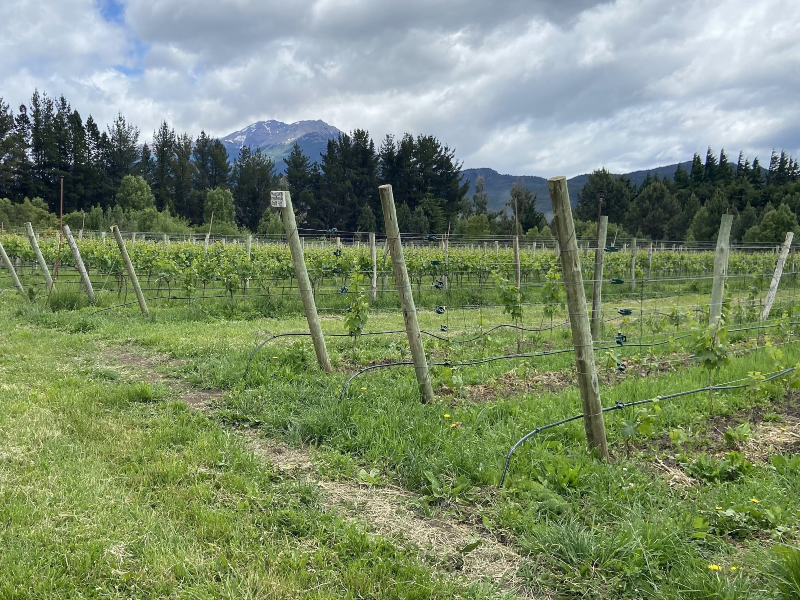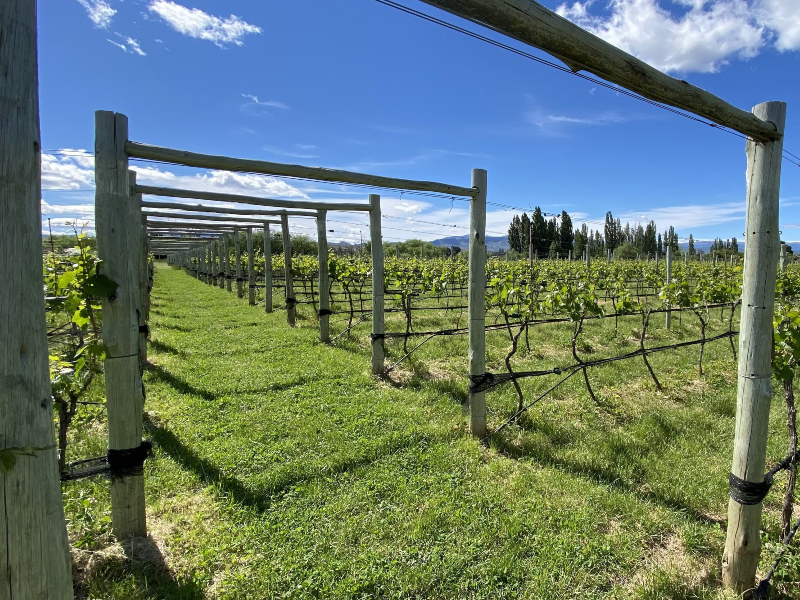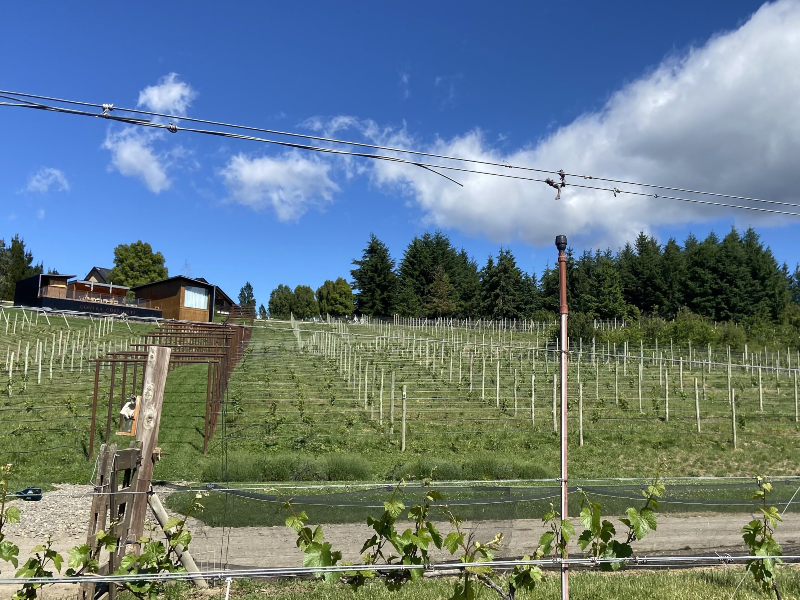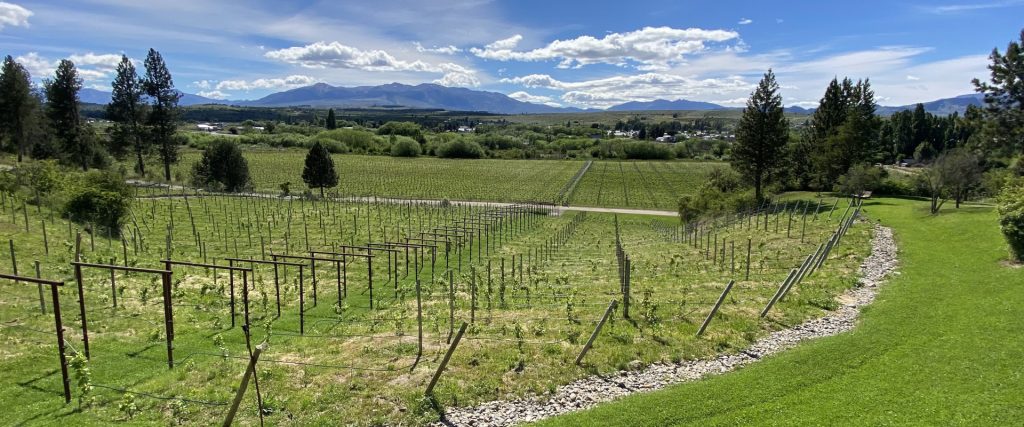The origins of the Trevelin GI. Located just 15 miles from Esquel, the biggest Andean town in the Province of Chubut and one of the most popular tourist destinations in the country, Trevelin is located on the outer limits of a wet area of Patagonia and is one of the most extreme places where vines are grown in Argentina.
However, this has not prevented Trevelin seeing exponential growth in land under vine recently. From no vineyards at all in the year 2000, growth has been 300% in the past 10 years.
The Trevelin GI: the challenges for pioneers

Apart from being an area that experiences a range of different climatic challenges, it has also barely any agricultural history at all. It was only thanks to the stubbornness of those who first planted vines that Trevelin GI and Trevelin emerged as a new terroir.
In addition to the difficult climate, another challenge is the lack of urban centers, which complicates logistics and sourcing supplies, as well as a meaning lack of qualified labor.
On this latter point, Sofía Elena, who after touring a range of cool winemaking regions such as Oregon, France, New Zealand and Chile came to Patagonia to set up a vineyard with the Contra Corriente winery explains: “In our case, I’ve been here full time for a few years working with the guys in the vineyards to train together. Being in an extreme area like this requires more careful vineyard management.”
Harsh weather and continuous frosts

The climate in Trevelin typically features strong wind, extreme cold, and frosts throughout the year, allowing producers to make fresh wines with good natural acidity and plenty of fruity presence.
The fact that it’s located on the Andes range means that the seasonal cycles are well-defined, which one doesn’t necessarily see in other winemaking regions in Argentina. For example, temperature lows in spring and autumn will often be -4.5° or lower.
Another important climatic factor is mentioned by Marcelo Yagüe, the founder of Casa Yagüe: apart from the “almost constant battle against frosts, which means that automatic spray irrigation systems are required throughout the year, sometimes running for 12 hours in a row,” rainfall has been dropping every year.
In 2014, when they bought the land where the vineyards are currently located, the average was 1700 millimeters a year. By 2019 and 2020 that had dropped to 700 and, in 2021, to 600.
These geographic and climatic characteristics, in addition to the quality of the grapes obtained year after year, convinced the National Institute of Viticulture to declare Trevelin the first official winemaking region in Chubut with the announcement of the Trevelin GI.
Varieties with short ripening cycles are the best option

Although in other regions with similar conditions, hybrid plants resistant to the cold have been used, in Argentina vitis vinifera is the norm and the varieties with short ripening cycles are those that have adapted best in Trevelin.
Gewürztraminer, Riesling and Pinot Noir are just a few of these and Elena explains that “with these varieties we can get the fruit ripe and avoid unpleasant herbaceous flavors.”
The resulting white wines have a profile of white flowers, aromatic herbs, citrus and pitted fruit while the reds deliver red fruit, with no green flavors at all.
A couple of the stand out characteristics of Trevelin wines are that you’re almost guaranteed good acidity and low alcohol levels.
A big future for the Trevelin GI
In spite of the difficulties and challenges, Trevelin has shown through its wines that it is an excellent new facet of Argentine viticulture.
Improving communications to take advantage of increased tourism and obtaining a better supply of qualified labor are a couple of the challenges local wineries hope to work on in the future, however, although they’re not yet producing in large quantities, the wines of Trevelin are very much something to look out for and enjoy.



